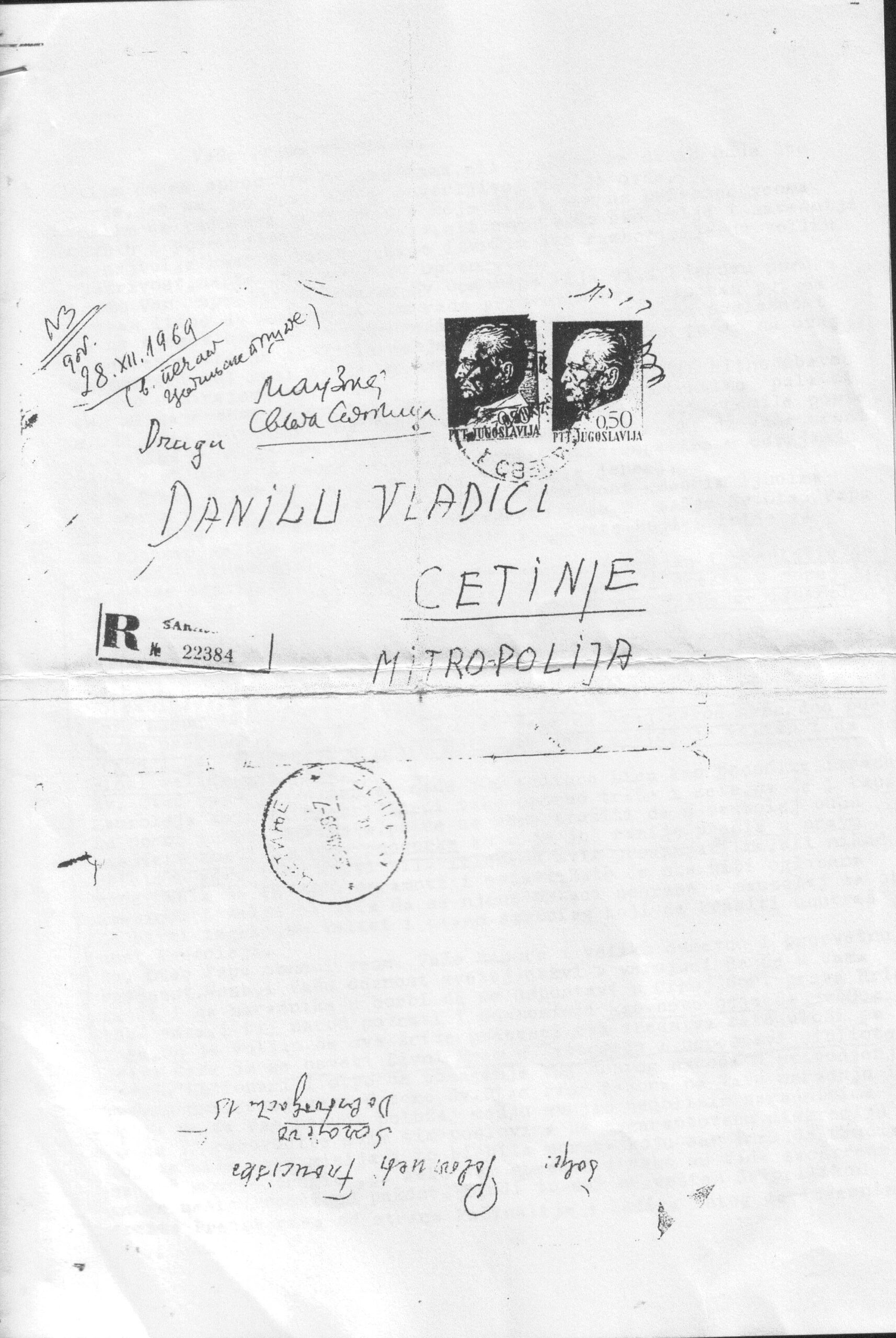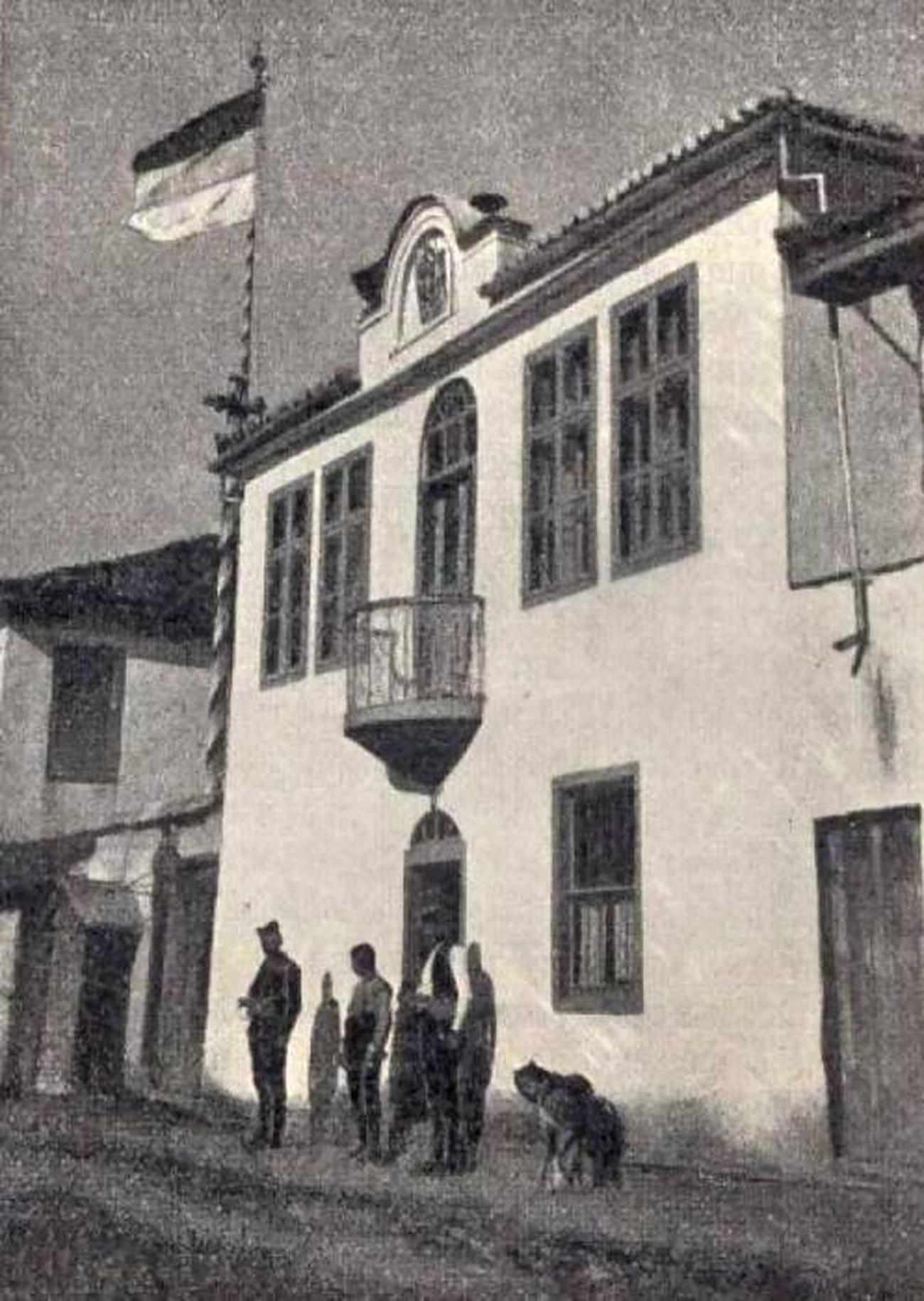No one doubts that the capital of Boka1 is Kotor.
Only ignoramuses and tourists care about Budva. Kotor is visited by missionary library ships (Doulos, 2004), by gay cruisers (Celebrity Silhouette, 2013), by a flotilla of cruisers and yachts, also by oligarchs, statesmen, freemasons, spies, überwhores… which is certainly not something to be proud of, but serves as a great introduction into how much Kotor is a theme of many geopolitical gossip sessions, besides being beautiful and geographically alogical.
It is through Kotor that Njegoš2 went abroad, in Kotor Prince Danilo II Petrović3 was assassinated, and his heir, Prince Nikola,4 would be visited by Freud. And so on and so forth. Kotor is the main port of the medieval Serbian state. And an excellent counterweight to the pit of vipers connected to the other world, which does not lie in Budva, nor in Podgorica, but is in Kotor. As then, so it continues today.
Who is it that has in their possession the letter by Francisco Palovineti, the Papal special envoy, sent to Metropolitan of Montenegro and the Littoral Danilo, where it is proposed that Njegoš’s chapel5 be removed from Lovćen together with Njegoš’s remains as the Pope wishes to “give 500 million lira to help in the construction of the Mausoleum… with the Mausoleum holding the remains of Lucia of Montenegro”?
The parish priest of Kotor and the Serbian Orthodox Church’s archpriest for Boka Kotorska for many years, father Momčilo “Momo” Krivokapić, one of the most educated persons from Boka Kotorska in history, presents the Pope’s indecent offer from 1969 that from the peak of Mt. Lovćen, where pilgrimages were made for Njegoš and Serbdom, Njegoš’s remains and the church dedicated to St. Petar of Cetinje6 be removed and replaced by a mausoleum, where it would be appropriate to put the bones of St. Ozana or Lucia of Kotor, a former Orthodox girl from the village of Relez, who came down to see the world and in Kotor, according to Palovineti, which is certainly a pseudonym, “converted to christ’s true faith”. The use of ekavian7 and using a minor “c” are true to the original, same as the capital “M” in “Mausoleum”, in the time before there was a mausoleum on the peak of Mt. Lovćen.
In any case. Almost 50 years ago the Vatican definitely had actionable plans for the beheading of Mt. Lovćen and the breaking of the spiritual backbone of Montenegro and an Orthodox Boka Kotorska.
In the letter to Metropolitan Danilo, it is stated that the Pope suggests that from Lovćen “that small chapel be removed and be placed in a museum or in Njeguši… where it would be fit for purpose, where the history of the time – that of an extinct people, can still only be seen”.
“It is clear to all” – it is stated further in the letter of the Pope’s envoy (all the errors are from the original material) – “that the current people has nothing in common with the previous people oriented towards the Greater-Serbian ideology which abused this people, which, it could be said, has completely died out. The new people with new habits and a new life is the people of the future and new efforts, so the Holy Father the Pope is willing to put all efforts into helping this people and to return it to Christ’s true faith, fr which he is willing to invest great resources”…
In the letter to Metropolitan Danilo, the Pope’s envoy speculates further: “Believing that in you he will found on a collaborator in the struggle to establish in Montenegro Christ’s true faith and for the people to be returned and become independent as a newborn of the Holy Father the Pope, he is willing to sacrifice anythingand invest all resources towardsthat”.
Therefore Ozana should be declared a saint and her remains should be kept in the mausoleum on Lovćen “to which purpose a grand and beautiful sarcophagus willbe built, which will beautify the interior of the Mausoleum”.
The Pope’s envoy, called Palovineti, hoped in vain that he would find and interlocutor in Metropolitan Danilo. He even offered him a “position among his closest associates”, with, lo and behold, guaranteed discretion.
Old residents of Boka have a saying to this day: Karta kanta, meaning – the proof is in writing. “Jasen” publishing house from Belgrade published in 2013. a mega-document titled “The Seven Burials of Njegoš”. Today the remains of the greatest Montenegrin among Serbs are in a sarcophagus on top of Lovćen, without any exterior Christian markings.
The parish priest of Kotor and the Serbian Orthodox Church’s archpriest for Boka Kotorska for many years, father Momo Krivokapić, a man who in his time climbed many holy mountains, including Sinai, decided not to step on Lovćen, desecrated in 1972,8 until there was a chapel erected there again, with a diameter of 4 meters.
A wise man needs little space.
By Nikola Malović, taken from his book Boka Kotorska i Srbija (third edition, 2023).
- Tran. note: “Boka” is a common shorthand for “Boka Kotorska”, literally “The Bay of Kotor”, although the bay in question has more in common with a fjord than a bay and would be the only fjord in a warm climate. ↩︎
- Tran. note: Petar II Petrović-Njegoš (1813-1851), the Vladika of Montenegro (1830-1851) serving as both the head of Serbian Orthodox Church in and the secular ruler of Montenegro. Also the greatest poet in Serbian language. ↩︎
- Tran. note: Danilo II Petrović-Njegoš (1826-1860), Vladika (1851-1852) and Knjaz (Prince) of Montenegro (1852-1860) and heir to Petar II Petrović-Njegoš. Discontinued the tradition of the rulers of Montenegro being monks as well as secular rulers. ↩︎
- Tran. note: Nikola I Petrović-Njegoš (1841-1921), Knjaz (Prince) (1860-1910) and King of Montenegro (1910-1918). Heir to Knjaz Danilo I and the last ruler of Montenegro from the Petrović-Njegoš dynasty. Father-in-law of King Petar I Karađorđević of Serbia and Yugoslavia, grandfather of King Aleksandar I of Yugoslavia. Also had daughters married to the Romanovs, King Vittorio Emanuele III of Italy and Prince Franz Joseph of Battenberg. ↩︎
- Tran. note: The chapel was destroyed once before, during the Austro-Hungarian occupation of Montenegro (1915-1918). The chapel was blown up using dynamite, while the remains of Njegoš were still inside. The remains were later gathered up by Czech and Slovak soldiers from the sides of the mountain peak. ↩︎
- Tran. note: Petar I Petrović-Njegoš (1748-1830), Vladika of Montenegro (1784-1830), first of the Petrović-Njegoš dynasty. Wrote histories, established laws and was known to personally intervene when warring Montenegrin tribes would line up for battle in front of the Cetinje monastery where he resided. Kept a lively correspondence. ↩︎
- Tran. note: Ekavian is one of the two dialects of Serbian. ↩︎
- Tran. note: The chapel was replaced by a mausoleum designed by Ivan Meštrović, who had close ties with the Catholic Church in Croatia and the Vatican. ↩︎
Translated by Books of Jeremiah



